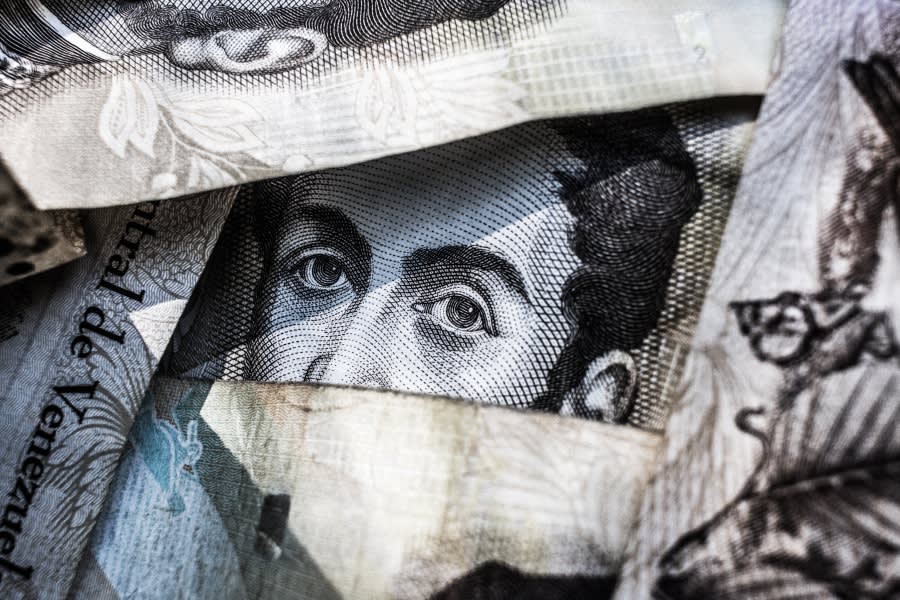Key takeaways
The interbank (mid‑market) exchange rate is the midpoint between wholesale bid and ask prices quoted between banks; it’s the benchmark for pricing currency conversions
Businesses usually pay a spread above this benchmark; the total cost varies by provider, currency pair and amount
Airwallex provides access to interbank FX rates for 120+ currencies with transparent pricing and no hidden fees
In Australia, average daily foreign exchange turnover reached approximately US$200.7 billion in April 2025.1 Yet most Australian businesses have no idea they're paying 4-6% more than they need to on international transfers depending on transaction size and currency pair.
As a growing Australian business, you'll likely be dealing with international suppliers and clients, which means you'll need to make foreign currency exchanges. So you want to make sure you're getting the best FX rate you can.
Understanding what the interbank exchange rate is, and how this impacts your FX rate, ensures you're prepared when it comes to finding a money transfer provider and exchanging currency exchange. It enables you to be aware, alert and armed with the knowledge to get the best rate available to you.
What is the interbank exchange rate?
In its simplest form, the interbank exchange rate is exactly what it says it is: it's the exchange rate that banks use when trading foreign currency between each other.
The interbank exchange rate is the wholesale benchmark banks quote to each other when exchanging currencies. It’s often called the mid‑market rate because it sits halfway between the wholesale buy (bid) and sell (ask) prices at a point in time. It moves continuously as liquidity and market conditions change.
The spanner in the works is that there's no single, agreed-upon interbank exchange rate. The interbank exchange rate fluctuates constantly throughout the trading day, with slight variations between different banks and platforms.
When you search online to find the foreign exchange rate for a particular currency or check exchange calculation services, this is typically the rate you will see. Unfortunately, this preferential rate is usually reserved for large-volume transactions between financial giants, which means Australian businesses typically don't have direct access to it.
How does the interbank exchange rate work?
The interbank market operates as a decentralised network where major financial institutions trade currencies directly with each other, either through direct relationships or electronic trading platforms. Unlike stock exchanges with centralised locations, this market runs continuously across global financial centres, following the sun from Sydney to Tokyo to London to New York.
Two primary platforms dominate interbank trading: EBS BrokerTec (popular in North America and Europe) and Refinitiv (holding strong positions in Asia). These systems allow banks to quote prices to each other and execute trades in real-time, with transactions often reaching billions of dollars within seconds.
The rate fluctuates constantly based on supply and demand dynamics. When major banks need specific currencies for their operations or client requirements, they create demand that pushes rates in one direction. Economic announcements, central bank policies, and geopolitical events can trigger rapid rate movements as banks adjust their positions. This constant price discovery creates the most accurate reflection of a currency's true market value at any given moment.
How is the interbank exchange rate calculated?
The interbank exchange rate is calculated as the mid-point between the bid and ask prices quoted between banks in the wholesale FX market, commonly called the mid‑market or spot rate, used as a benchmark for pricing currency conversions.
Interbank rate = (bid + ask) ÷ 2
Here's what Australian businesses need to understand:
The interbank/mid‑market rate is a reference level banks quote to each other – it moves continuously with liquidity, market data, and time of day as trading sessions shift from Sydney to Tokyo to London to New York.
Retail and business customers typically pay a spread above this rate – Australian banks often add in markups, which compounds significantly on large transfers, potentially costing businesses thousands of dollars annually
The bid‑ask spread reflects market conditions – major‑market pairs like AUD/USD have tighter spreads than emerging‑market currencies.
Modern fintech providers like Airwallex offer near-interbank rates with transparent, small margins rather than the opaque markups traditionally charged by Australian banks
How do you find the interbank rate?
The interbank rate is readily available through multiple sources, though remember that what you see isn't what you'll actually get as a business customer. Google's currency converter displays the current interbank rate when you search for any currency pair like "AUD to USD". Financial websites such as Bloomberg, Reuters, and XE.com also publish real-time interbank rates.
For Australian businesses, the Reserve Bank of Australia provides official daily exchange rates, while currency converter apps on your mobile device offer convenient access to current rates. Keep in mind that interbank rates change constantly throughout the trading day – potentially several times per minute during active market periods.
The interbank rate vs the mid-market rate
The terms 'interbank rate' and 'mid-market rate' are used interchangeably in the foreign exchange market. Both refer to the midpoint between the buy (bid) and sell (ask) prices at which banks trade with each other. You may also see this called the 'spot rate' or 'real exchange rate' – they all mean the same thing: the wholesale rate banks use for large currency transactions.
Why is the interbank exchange rate important for Australian businesses?
Understanding the interbank exchange rate is critical for Australian businesses for several reasons that directly impact your bottom line:
Negotiate better rates: If you're making large international money transfers, you can use the interbank rate as leverage to negotiate a better deal with your bank or provider. Knowing the true market rate gives you the power to push back on excessive markups.
Choose the right provider: Compare the rates offered by different providers against the interbank rate to see who's offering the most competitive deal. This is particularly important for Australian businesses dealing with major trading partners like China, the US, and the UK.
Track market trends: Monitoring the interbank rate can help you spot trends and potentially time your currency exchanges for maximum benefit, especially important given the AUD's volatility against major currencies.
Save money: Ultimately, the closer your exchange rate is to the interbank rate, the less you'll pay in hidden fees and markups, directly benefiting your profit margins. For example, Coconut Bowls increased their margins by 3% simply by switching to Airwallex for better FX rates.
Benchmark for transparency: The interbank rate serves as the universal benchmark for currency valuations, helping you identify providers charging excessive fees disguised as “competitive” rates.
Access fast international transfers at a low cost.
Is the interbank exchange rate the best rate available?
In short, yes. If you're letting a traditional Australian bank, credit card, or airport exchange service handle your currency exchanges, you're likely not getting anywhere close to the interbank rate, which means you may be paying hefty markups on every transaction.
On average, banks can mark up an exchange rate by 4–6%. Those costs add up fast, and can have a major effect on your bottom line if you make international transactions regularly.
You want to get a rate as close as possible to the interbank rate to avoid losing money in fees, which is why Australian businesses like July, and Orbitkey have switched to our platform for their international payment needs. Our like-for-like settlement in 14+ currencies means you avoid the double conversion fees that other platforms charge.
Can my business access the interbank exchange rate?
As an Australian business, you typically won't receive the exact interbank exchange rate when exchanging currency. You will usually get a blended rate, taken as a mix of live exchange rates, market data sources, and the differences between banks.
Australian banks will usually mark up the interbank rate by anywhere from 4% to 6%. It doesn't sound like much, but these small percentages add up, particularly when you're dealing with large amounts of money.
After all, foreign transfer providers and banks are businesses too, so they will add a little increase on the exchange rate as a way to pay staff, to pay for the time taken to make the currency exchange, and as a way to boost their profits.
However, we provide Australian businesses access to near-interbank FX rates with only a small, transparent margin on top. This gives you genuine wholesale pricing rather than the inflated retail rates offered by traditional banks.
The difference between bid and ask prices
When looking at foreign currency exchange, you'll come across the terms bid price and ask price; these are simply different ways of saying the buy and sell prices. Banks sell currency for the ask price and buy currency at the bid price, with these prices typically differing based on factors ranging from political climate and world news to inflation, interest rates, and supply and demand.
The difference between these two prices is known as the bid-ask spread, and understanding it is crucial when exchanging foreign currency as this determines where you're getting the best deal.
Major currency pairs typically have low spreads – for example, AUD/USD has very tight spreads due to high trading volumes between Australia and the United States. In emerging markets, the bid-ask spread can be much larger and change dramatically throughout the day.
What affects spreads for Australian businesses:
Market liquidity: Major pairs like AUD/USD, AUD/EUR have tight spreads during peak trading hours
Time of day: Spreads are typically tightest when both Australian and destination country markets are open
Economic events: RBA announcements or major economic data releases can temporarily widen spreads
Market volatility: During uncertain times, banks price in additional risk through wider spreads
Hidden fees that increase your exchange rate costs
Most currency exchange providers make money by charging a markup on the bid-ask spread - they buy your currency at one price and sell it at a higher rate. While these markups might look small on paper (often just 1–2%), they quickly become significant expenses for businesses making regular international transfers.
Consider this: exchanging A$100,000 with a 1% markup costs you A$1,000. For businesses transferring money monthly or weekly, these "small" percentages can cost tens of thousands annually.
Additional hidden costs affecting Australian businesses:
Processing and transfer fees: Traditional banks often charge A$25–A$50 per international transfer
Intermediary bank charges: SWIFT transfers may pass through multiple correspondent banks, each deducting fees along the way
Weekend and holiday markups: Many providers increase spreads during off-market hours when liquidity is lower
Volume-based discrimination: SMEs often face higher costs than large corporations, despite using the same infrastructure
These cumulative costs make finding transparent, competitive exchange rates crucial for protecting your bottom line.
How Airwallex provides access to near-interbank exchange rates
We take the headache out of navigating foreign currency exchange for Australian businesses. We enable businesses to get the closest possible near-interbank exchange rate.
Trade in 60+ currencies at interbank rates: Our powerful FX engine lets you trade 60+ currencies at the interbank rate with 100+ currencies priced live on the spot market, ensuring you get competitive rates on your currency conversions.
Save up to 80% on FX costs: Compared to traditional banks and other platforms, our transparent pricing lets you keep more of your money. No forced conversions or hidden FX fees.
Like-for-like settlement in 14+ currencies: Receive payments in the same currency your customers pay in, with funds settling directly into your multi-currency wallet. This eliminates double conversion fees that other platforms charge.
Faster, more efficient payouts: Send money to over 200 countries with more than 90% of our transactions using local rails (instead of SWIFT). Approximately 95% of transactions settle within hours or the same day, with around 52% arriving instantly.
Open Global Accounts within minutes: Accept currencies in over 60 countries and get local account details for more than 60 currencies, allowing you to operate like a local business, globally.
Real customer success: Jack Grace, founder of Lux Skin, explains the Airwallex difference:
"The fees are significantly lower across most of our financial products, and everything is done with super-fast speed. For us, if we're sending funds to Hong Kong or China for example with Airwallex, they'll usually arrive the same day or the next day."
With our comprehensive global financial platform, we enable you to get near interbank-rates while managing payments, FX, multi-currency accounts, and expenses all in one place.
Make your first transfer with an Airwallex Business Account.
Interbank exchange rate: frequently asked questions
How do I find the current interbank rate?
You can check the interbank rate through several reliable sources:
Search online for ‘currency converter’: Search "AUD to USD" or any currency pair
Financial websites: Bloomberg, Reuters, XE.com, or OANDA
Reserve Bank of Australia: Official RBA exchange rates
Airwallex platform: Real-time rates for 1,000+ currency pairs
Remember that interbank rates fluctuate constantly during trading hours, potentially changing several times per minute during active periods.
Why can't Australian businesses get the exact interbank rate?
The true interbank rate is reserved for very large trades between major financial institutions (typically $100 million or more). Australian businesses require additional services like customer support, compliance checks, regulatory oversight, and smaller transaction processing, which necessitate some markup to cover these costs. However, Airwallex provides near-interbank rates.
How much should I expect to pay above the interbank rate in Australia?
This varies significantly by provider:
Traditional Australian banks: Add a spread above the benchmark; the total cost varies by provider, pair and amount
Near-interbank rates: What Airwallex provides with minimal, transparent margins
Credit cards: 2–4% plus foreign transaction fees
Airport exchange services: 6–8% markup
Online remittance services: 1–3% markup depending on volume
When is the best time to exchange currency for Australian businesses?
The FX market operates 24/5, with the best liquidity during peak trading sessions:
Sydney-Tokyo overlap: 8am–12pm AEST when both markets are active
Sydney-London overlap: 6pm–10pm AEST (during Australian summer)
Avoid weekends: When markets are closed and spreads are typically wider
With our 24/7/365 pricing, you can access competitive rates even outside traditional market hours.
Can I lock in exchange rates for future payments?
Businesses can secure a fixed exchange rate for upcoming payments through a forward contract. This financial agreement lets you lock in today’s rate for a transaction scheduled in the future, helping to manage risk from currency fluctuations. Forward contracts are widely used by companies that want predictable costs for international transfers. Many providers, including us at Airwallex, offer this type of service, giving businesses confidence and stability when planning cross‑border payments.
How does Airwallex compare to traditional Australian banks for FX?
Airwallex provides several advantages over traditional banks:
Save up to 80% on FX costs compared to traditional banks and other platforms depending on transaction size and frequency
Trade in 90+ currencies at near-interbank rates with live spot market pricing
Open Global Accounts with local bank details in 60+ countries within minutes
Like-for-like settlement in 14+ currencies with no forced conversions
What currencies can I trade with Airwallex?
We support:
90+ trade currencies at near-interbank rates including all major global currencies
100+ currencies priced live on the spot market for real-time conversions
Major currency pairs: USD, EUR, GBP, CNY, JPY, NZD, SGD, HKD
Like-for-like settlement in 14+ currencies to avoid double conversion fees
Sources:
This information doesn’t take into account your objectives, financial situation, or needs. If you are a customer of Airwallex Pty Ltd (AFSL No. 487221) read the Product Disclosure Statement (PDS) for the Direct Services available here.
Our products and services in Australia are provided by Airwallex Pty Ltd ABN 37 609 653 312 who holds AFSL 487221. Any information provided is for general information purposes only and does not take into account your objectives, financial situation or needs. You should consider the appropriateness of the information in light of your own objectives, financial situation or needs. Please read and consider the Product Disclosure Statement available on our website before using our service.

Tilly Michell
Content Marketing Manager
Tilly manages the content strategy for Airwallex. She specialises in content that supports businesses in their growth trajectory.
Posted in:
TransfersShare
- What is the interbank exchange rate?
- How does the interbank exchange rate work?
- How is the interbank exchange rate calculated?
- How do you find the interbank rate?
- The interbank rate vs the mid-market rate
- Why is the interbank exchange rate important for Australian businesses?
- Is the interbank exchange rate the best rate available?
- Can my business access the interbank exchange rate?
- The difference between bid and ask prices
- Hidden fees that increase your exchange rate costs
- How Airwallex provides access to near-interbank exchange rates



